On an August morning 73 years ago, four warplanes strafed a ship carrying hundreds of civilians seeking safety in the South Korean port city of Yeosu, during the bloody opening months of the Korean War. Witnesses say helpless people were shot and others jumped in terror into the sea. An estimated 150 persons were killed and 50 wounded.
The traumatic episode is etched in the memory of those who lived through it. But for decades the survivors were wary of pressing for a full accounting of what happened because it might unearth an unfortunate truth – that the warplanes that attacked the ship were likely not from the communist forces of North Korea, but from the U.S. side.
A 2010 investigation report by an independent South Korean Truth and Reconciliation Commission, which examined atrocities spanning 80 years of Korean history including during the Korean War, found that the attack was most likely due to friendly fire by the U.S. military, aimed at disrupting potential activity by communist forces.
![The local council in Yeosu, South Korea, hopes to salvage the wreckage of the ship that sank in Iyapo Bay [shown] and examine it for evidence of the attack. Credit: RFA.](https://www.rfa.org/resizer/v2/B3RIBUUFLI5GQWM3HKWPURRMBU.jpg?auth=a27294627516ebbacbd77705e42625f19fa730ed4a423d99124c72efb4157e4d&width=800&height=530)
And now a South Korean researcher has retrieved U.S. Air Force records – including a Final Mission Report Summary – that add to the weight of evidence supporting that conclusion. The records, copies of which have been shared with local officials and seen by Radio Free Asia, appear to be authentic. They show that an American attack was conducted on that same day – Aug. 3, 1950 – involving four U.S. warplanes that fired more than 9,000 .50 caliber rounds in a “dock area” at “Yosu” – a reference to Yeosu.
“Writing a mission report is a fundamental aspect of pilots’ duty that entails documenting the outcomes of their missions,” said Jeon Gab-seang, the researcher at Seoul National University.
“The document precisely matches with the testimonies of Yeosu people, and we can infer that it is likely that the four planes sent out on that day were involved in bombing civilians in the Iyapo Bay,” said Jeon, who has been investigating the matter since 2019.
The local council in Yeosu has sponsored a forensic investigation and hopes to salvage the wreckage of the ship that sank in Iyapo Bay at Yeosu. In an initial finding exclusively shared with RFA, investigators say they located a bullet hole on what appears to be an engine of the ship, suggesting the vessel had come under fire.
The investigators “identified a hole that is 12 mm in diameter, which is similar to the diameter of a .50 caliber ammunition,” said the preliminary report by the Underwater Ecology Institute, a science research institute in South Korea.
However, the institute cautioned against a hasty conclusion that the damage was directly caused by attacks from American warplanes.
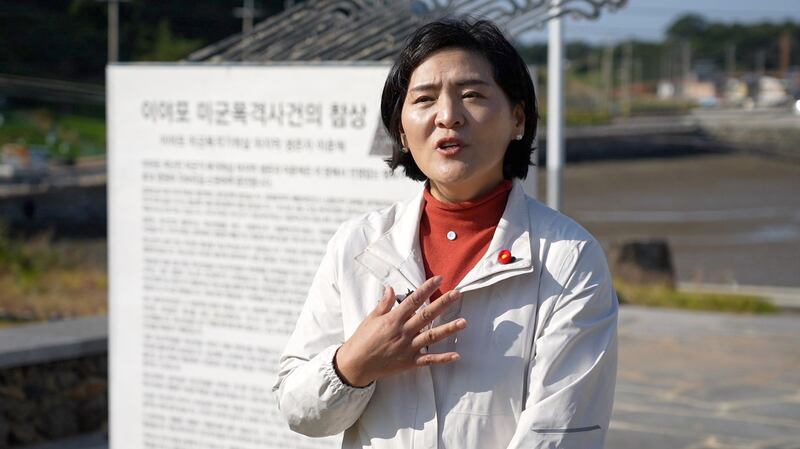
“Further investigation may require salvaging the engine structure and examining the interior of the engine to determine if it is a semi-diesel or diesel engine,” it said. If the engine is found to be a semi-diesel engine, it can be assumed that the ship was built and used before the 1960s, which could match the timeline of the Iyapo incident.
Park Seong-mi, a member of Yeosu City Council, and also the chairwoman of the council’s special committee for investigating the Iyapo incident, believes that it was American forces who fired at the ship. She said it’s important to get to the bottom of what happened and honor the human rights of those who perished.
“I believe that acknowledging responsibility will only foster our rapport and trust,” Park said in an interview with RFA at Iyapo Bay. “I’m confident that our alliance with the U.S. will be even further solidified through an acknowledgment and apology.”
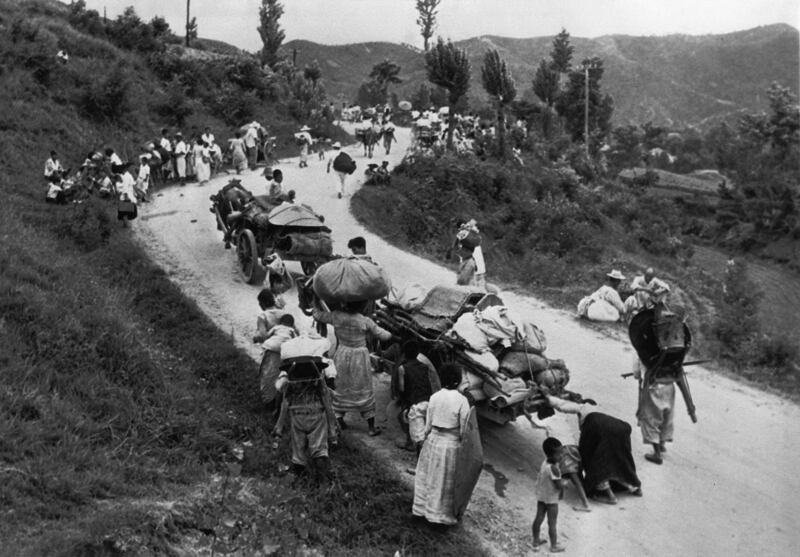
Afraid to speak out
The Korean War was one of the most bloody and brutal conflicts of the 20th century. An estimated two to three million civilians and combatants died during the three years of hostilities, including more than 36,000 U.S. service members. Historians have documented massacres of civilians and prisoners on both sides.
North Korea allows no outside scrutiny of its actions, past or present. A U.N. commission of inquiry in 2014 concluded that the North had committed severe human rights abuses including crimes against humanity against its own people spanning decades.
The democracies of South Korea and the United States have, however, been more willing to grapple with the war’s painful history.
When South Korea was under authoritarian rule, many in the country dismissed reports of civilian deaths due to U.S. military action as communist propaganda - allegations that could damage Seoul’s relations with Washington, which has retained tens of thousands of forces on the peninsula to deter aggression from the North.
But those attitudes have started to shift since South Korea embraced democracy in 1987.
In 1999, an Associated Press report on a mass killing of South Korean refugees by U.S. military air and ground fire near the village of No Gun Ri in central South Korea in late July 1950 prompted official investigations. The U.S., working closely with the South Korean government, concluded that U.S. soldiers did kill or injure "an unconfirmed number of Korean refugees in the last week of July of 1950 during a withdrawal under pressure in the vicinity of No Gun Ri," according to a press briefing transcript citing then-U.S. Defense Secretary William Cohen.
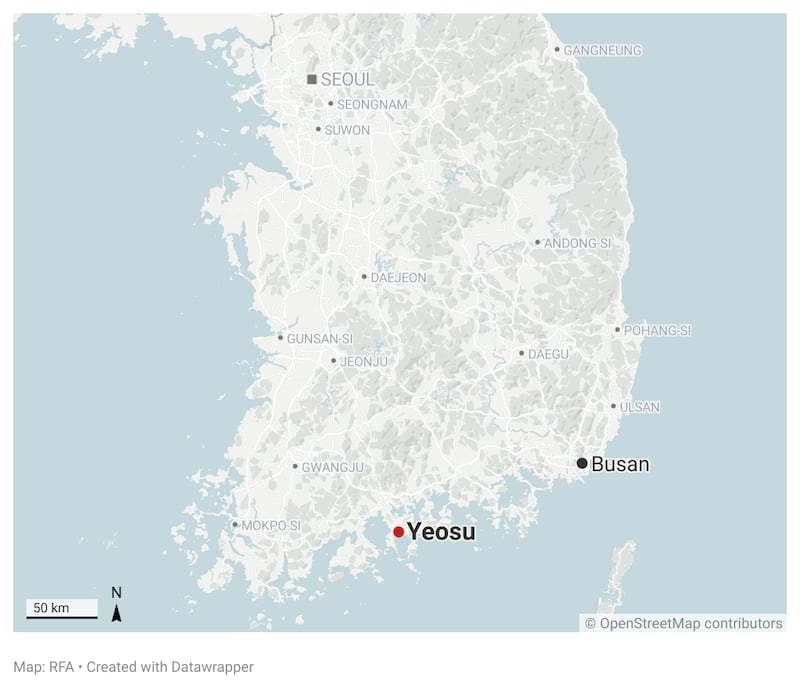
The U.S., however, maintained that no orders were issued to fire on the civilians.
Then-President Bill Clinton said in a statement, "I deeply regret that Korean civilians lost their lives," but stopped short of issuing an apology. Instead, the U.S. offered a plan for a memorial at No Gun Ri and a scholarship fund, which was rejected by survivors.
Despite the passage of time, it’s still a rarity among the community in Yeosu to speak out about the 1950 ship attack. Local media have also long shied away from reporting the accounts of witnesses of the attack.
While it remains a sensitive topic for local people, another Yeosu city councillor, Lee Mi-kyung, said “truths are coming to light as we slowly uncover historical narratives under the principles of reconciliation and coexistence.”
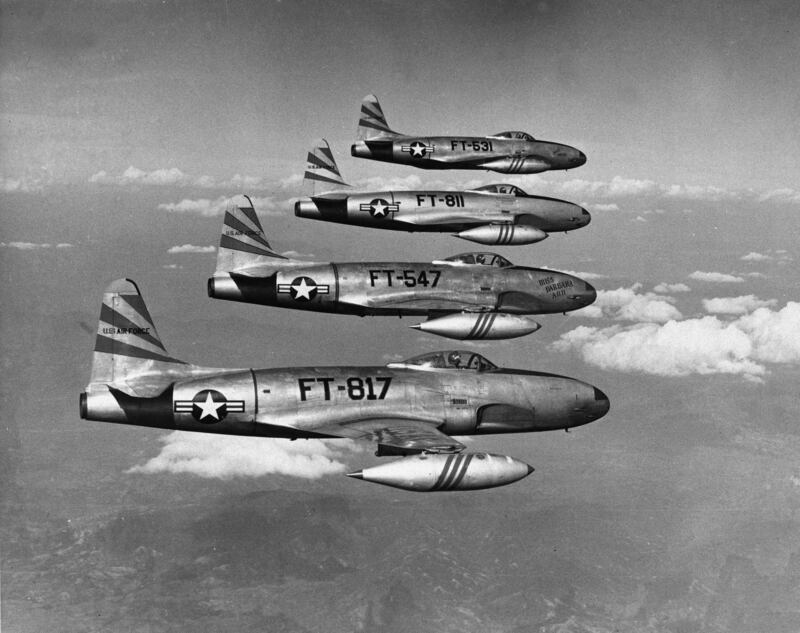
Evacuees under attack
According to the 2010 commission report, the ship that came under fire in Iyapo Bay had sailed from South Korea’s second largest city, Busan, to Yeosu, which lies about 80 miles to the southwest, on the southern coast of the Korean Peninsula. The passengers on the ship were mostly people displaced by fighting who were being moved out to Yeosu to reduce overcrowding in Busan.
At that time, Busan was a last refuge for people in South Korea in the face of North Korea’s advancing forces which had seized control of most of the peninsula, after advancing south on June 25, 1950, in a surprise offensive. For the first two months of the war, the South retreated until establishing a defensive line known as the “Busan Perimeter.” It was not until September 1950 that joint U.S.-South Korean forces managed to cut off North Korean troops and supply lines in the South, ultimately forcing them to retreat.
Against this historical backdrop, the commission report says that at around 9 a.m. on Aug. 3, 1950, four unidentified aircraft appeared in the sky over the bay. One opened fire with a machine gun and was followed by the other planes, which flew from inland toward the sea and targeted the ship. In all, the planes made four passes to unleash their gunfire upon the vessel. According to the commission, which compiled dozens of witness testimonies and evidence from the scene, about 150 individuals were killed and more than 50 wounded.
The investigation could not definitively say who launched the attack, although based on eyewitness testimonies and its evaluation of aerial bombing policy during that period, the commission concluded that it was most likely a case of friendly fire by the U.S. military as it sought to disrupt potential enemy activity at sea.
“The bomber is believed to have been U.S. military fighter jets, but there are no direct bombing records or documentation related to the incident available,” the commission report said.
“It is believed that the U.S. military may have neglected to adhere to pertinent international law provisions, such as implementing sufficient civilian protection measures during aerial bombardment and making efforts to distinguish between civilians and the North Korean military.”
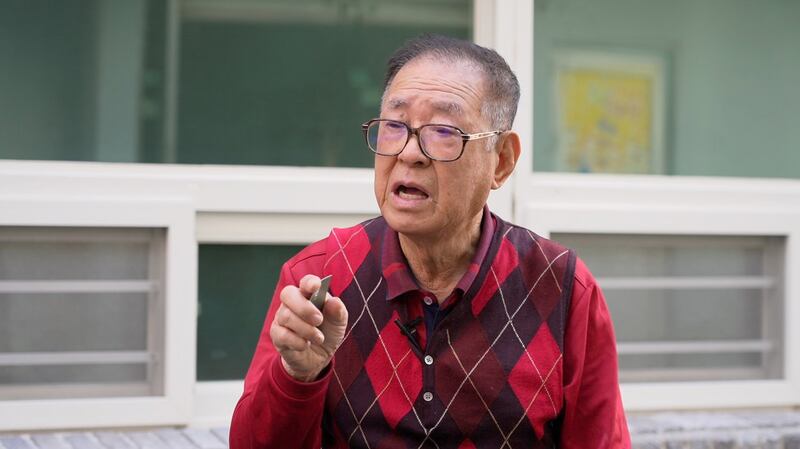
Targeted with precision
Lee Chun-hyuk is one of the few surviving witnesses, and recounted the attack to RFA with clarity and conviction. He was on board the ship and lost four of his close family members.
“It was around 10 a.m. when someone brought me rice balls,” the 89-year-old said in an interview in Busan, where he now lives. “As I was eating them, four airplanes appeared in the sky. The first one circled overhead before they all began shooting at us.”
“I was 16 at the time and was a good swimmer. I jumped into the water to avoid the shooting. When I reached the land, I noticed a house nearby where I sought refuge. My sister and brother arrived later in a boat, and the three of us hid together,” Lee Chun-hyuk recalled.
“While we were hiding, a passer-by informed us that our mother had drowned. Those who survived, survived. But my mother wasn’t as fortunate,” he said.
As night fell, the siblings headed to nearby mountains where the locals advised they would be safer.
“A few days into hiding, I received more tragic news. My father and my 6-year-old sister had both drowned. It was said that my father had been shot.
“In that ordeal, I lost my 6-year-old sister, my mother, my 3-year-old brother, and (my father) — a total of four family members.”
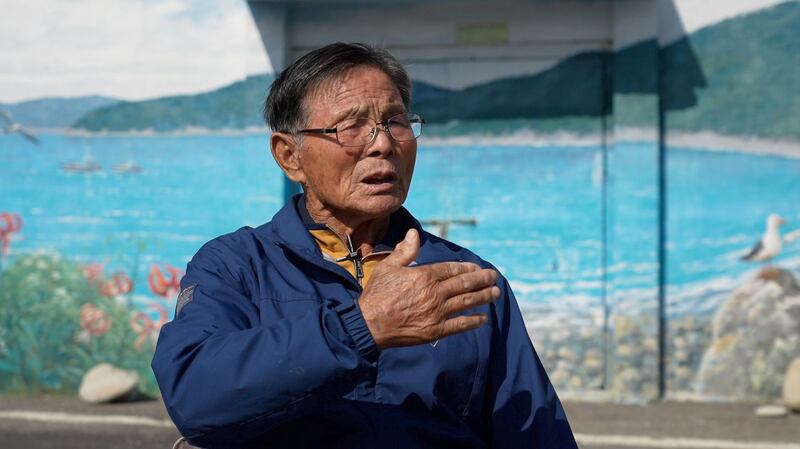
Lee’s vivid account matched that of another witness, Lee Sa-yeon, 87, who watched the attack unfold from the bay side - where he spoke to RFA. He has lived at Iyapo Bay his whole life.
“My uncle’s house stood behind this spot,” Lee Sa-yeon said, referring to a building that once overlooked the bay. “And my father, brother and myself, the three of us were in it. We had a clear view of the jets as they flew overhead, targeting the evacuation ship.”
“The sound of their machine guns, firing with such precision, filled the air, and it was just so terrifying to watch.”
He also said that a total of four planes appeared before they launched the attack. “A pair of airplanes flew in formation and struck the evacuation ship. It was soon followed by another pair that hit it again,” he said.
“To survive, people jumped into the water, but some were tragically shot,” he continued. “Some were shot, others had injuries so severe their arms had fallen off, they were bleeding profusely and desperately crying out for their lives. Many sought refuge in nearby houses, pleading for food.”
![Declassified U.S. military records suggest that four U.S. warplanes were operating in the Iyapo Bay area [shown] on the day of the attack. Credit: RFA](https://www.rfa.org/resizer/v2/54IYVGR2TWJWX2PU3MV4GM7RT4.jpg?auth=74cde3e17fa555c1586936b551e92958ab230124ab6a5a93518a08992b3067fd&width=800&height=466)
Declassified Documents
The witness accounts have to date received little attention or media coverage, despite the findings of the 2010 South Korean commission report. That could change with the additional information contained in declassified U.S. military records suggesting that four U.S. warplanes were operating in the area that day.
Jeon Gab-seang, the Seoul National University researcher, obtained the U.S. Air Force documents from the U.S. National Archives and Records Administration (NARA). Some of the information in those documents has previously been reported by local media outlet Yeosu MBC. RFA initially obtained copies of the records from Yeosu councillor Park Seong-mi, then verified with Jeon they were what he obtained from NARA. The National Archive has yet to make the documents available on its website but did confirm that the documents stored under that serial number are publicly available.
The documents include a Mission Interrogation Form for 12 planes from the U.S. Fifth Air Force on an Aug. 3, 1950, mission to target a “dock area” near “Kwag-do” in “Yosu.” Kwag-do refers to an island located about 30 kilometers (19 miles) away from Ando island, where Iyapo Bay is located. Yosu is a romanized variation of Yeosu.
![A U.S. Air Force report described the attack mission: “12 aircraft flew medium altitude bombing sorties to Yosu [Yeosu] and Sunchon. The railroads were damaged at Sunchon and the dock area and RR yards at Yosu were damaged.” Credit: U.S. Air Force](https://www.rfa.org/resizer/v2/UMZJKRU3OIK4SLG4VEJV47T32E.png?auth=efde4a5bb653020c443e358927d9e8667b37710c957b2402c3a32a6e6b31da32&width=800&height=450)
Four of the 12 aircraft launched an attack described as mission number 217, the documents show. They indicate that aircraft numbers 257, 230, 266, and 287 – each loaded with 5,600 “.50-calibres” rounds – returned to base with 4,000, 3,000, 2,800, and 3,500 rounds of ammunition respectively. This suggests that around 9,100 ammunition rounds were expended during the mission.
This likely refers to rounds from a .50 caliber machine gun that was commonly used by various military aircraft for targeting enemy aircraft and for ground attacks at that time. The high rate of fire and power of the .50 caliber round made it a preferred choice for many aircraft before more advanced autocannons and missile systems became standard.
Both the number of aircraft involved – a total of four – and the ammunition type – from a machine gun – align with the findings of the 2010 commission report.
The Mission Interrogation Form assessed the result of the bombing as “good.” The report also includes the names of pilots and gunners, which RFA is not disclosing because of privacy considerations for the former service members.
A separate document, the Final Mission Report Summary, described the mission as follows: “12 aircraft flew medium altitude bombing sorties to Yosu and Sunchon. The railroads were damaged at Sunchon and the dock area and RR yards at Yosu were damaged,” using different romanization for the Suncheon region. RR stands for “railroad.”
A third document containing flight records shows the U.S. Air Force made reconnaissance flights over the region including the An-do island, where Iyapo is located, on Aug. 1 and 3. The Air Force mission numbers are given as R252C and R283A, respectively.
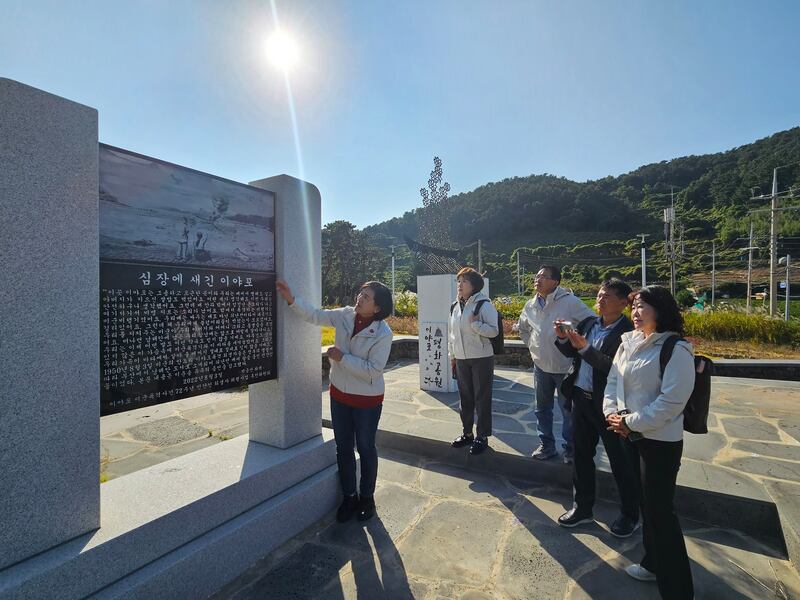
Why Attack?
There were compelling tactical reasons for the U.S. forces to strike targets in the Yeosu area at that time. Between July and September 1950, North Korea occupied the Jeolla region which included Yeosu.
The “region became a transit area for the North Korean troops and supplies, making it a target for interdiction by the U.S. Air Force,” the 2010 commission report said, adding that the American bombers focused on targeting railways and bridges.
The report’s assertion is supported by what was disclosed in the U.S.’s Final Mission Report Summary – that the Air Force was intent on disrupting North Korean supplies, which included bombing bridges. It also noted the destruction of four boats during the operation on Aug. 3 in the Southwest Sector, encompassing the Yeosu region.
RFA e-mailed the U.S. Department of Defense on Oct. 31 about the Yeosu incident and allegations of deaths of civilians on an evacuation ship by U.S. forces. The department referred the request to the U.S. Air Force. The U.S. Air Force and South Korea’s Defense Ministry did not respond to RFA’s requests for comment by publication time.
What’s next?
The Yeosu city council plans to salvage relevant parts of the sunken ship and has identified four underwater objects, one of which it says might be the front section of the submerged vessel.
It also wants to create further awareness of the incident by convening conferences about it, according to Lee Cheol-seung, a research fellow for the city council.
“This event represents a painful chapter in history where the residents were powerless to resist,” said Jeong Shin-chul, another Yeosu city councillor. “However, I believe the era of concealing and remaining silent about it has now passed.
“At the end of the day, this pertains to human rights,” she continued. “Frankly, I believe the initial step toward upholding these rights is to uncover the truth and recognize the victims.
“This is a significant part of history for which the state (South Korea) bears responsibility. I believe it’s time for the state to investigate thoroughly and uncover the truth.”
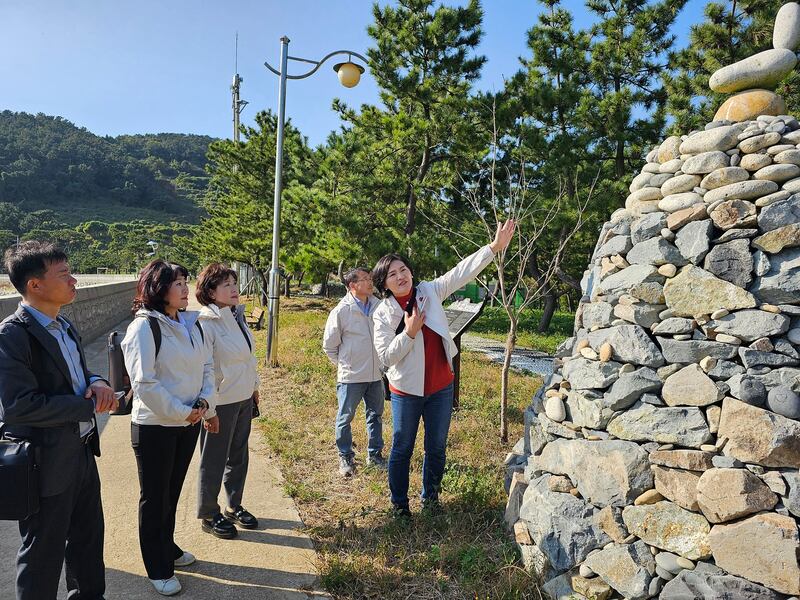
“The truth must be found”
All 89-year-old survivor Lee Chun-hyuk wants is an acknowledgement of the incident by both the South Korean and the U.S. governments.
“The Korean government mishandled the situation,” he said. “Shouldn’t the (South Korean) government bear some responsibility?
“Also, the ship had the South Korean flag on it, and they (the pilots) must have seen that the ship was filled with civilians, including babies. Why would anyone want to target it?
“While it may have been military action by individual soldiers, isn’t the U.S. government also accountable? They should bear the responsibility too,” Lee said.
Local councillor Park Seong-mi says the council will do everything it can to reveal the truth of what happened and has confidence it won’t undermine the U.S.-South Korean alliance.
“If our endeavors can shed even a hint of light on this, it’s the very least we can do,” she said. “Does anyone actually believe the U.S. is our enemy, not our ally? Of course it’s our ally! And I believe it acted in the best possible way back then, given our strong alliance.
“But, the truth pertaining to this matter is a separate issue, and it must be found and acknowledged.”
Chan reported from Taipei, Taiwan. Edited by Mat Pennington.
